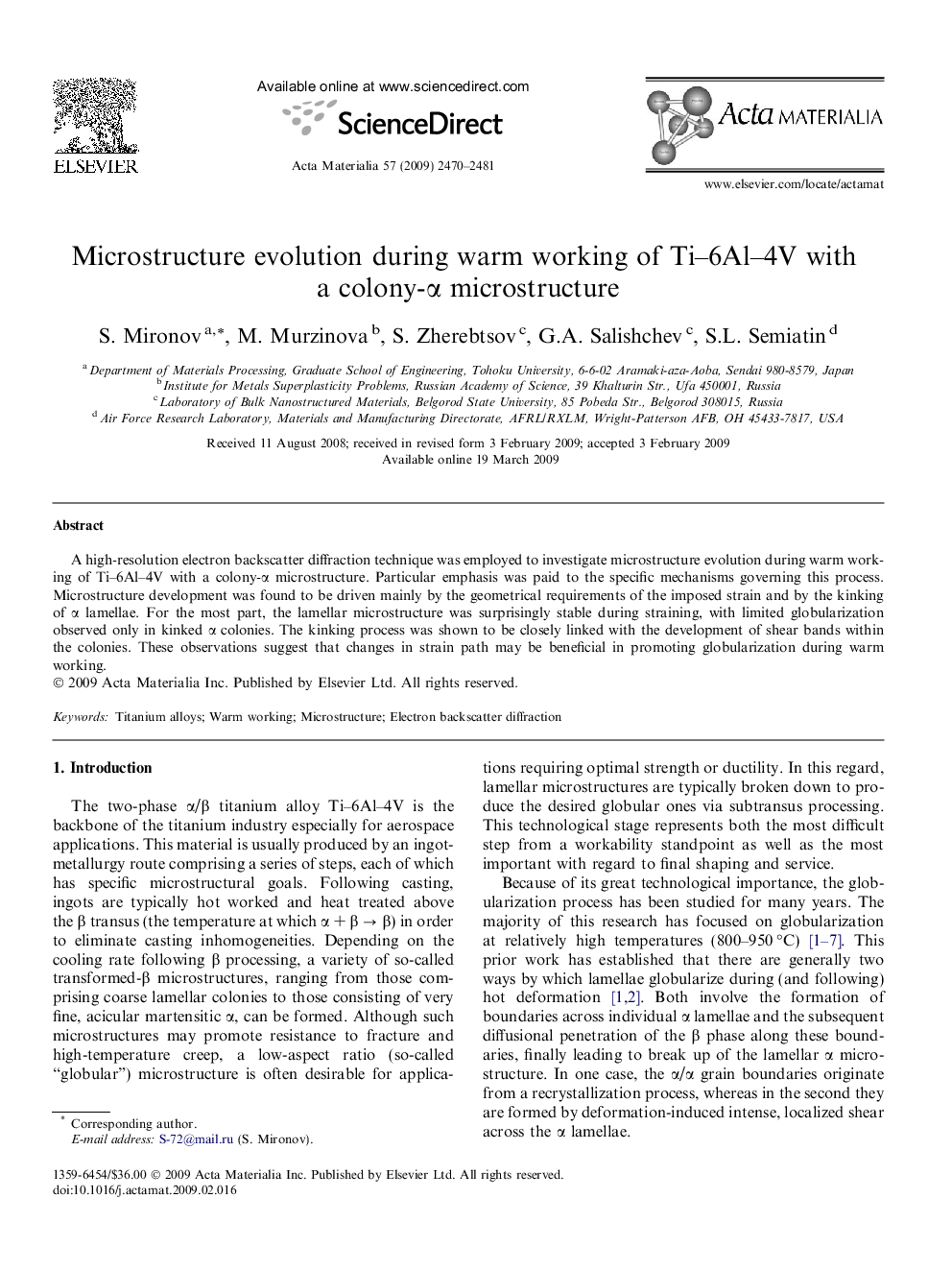| Article ID | Journal | Published Year | Pages | File Type |
|---|---|---|---|---|
| 1448127 | Acta Materialia | 2009 | 12 Pages |
A high-resolution electron backscatter diffraction technique was employed to investigate microstructure evolution during warm working of Ti–6Al–4V with a colony-α microstructure. Particular emphasis was paid to the specific mechanisms governing this process. Microstructure development was found to be driven mainly by the geometrical requirements of the imposed strain and by the kinking of α lamellae. For the most part, the lamellar microstructure was surprisingly stable during straining, with limited globularization observed only in kinked α colonies. The kinking process was shown to be closely linked with the development of shear bands within the colonies. These observations suggest that changes in strain path may be beneficial in promoting globularization during warm working.
